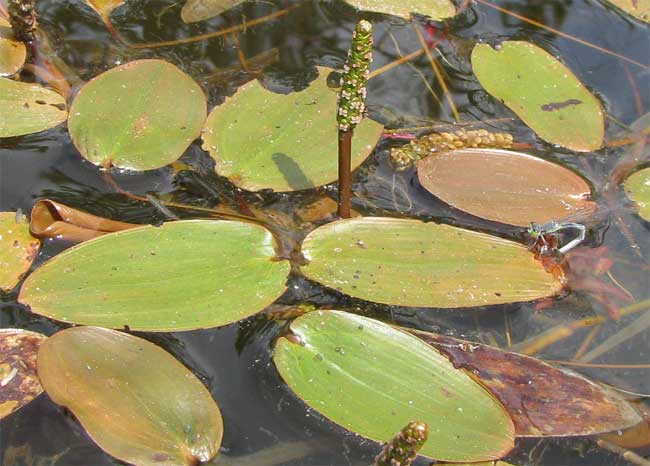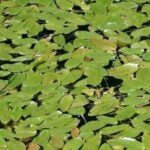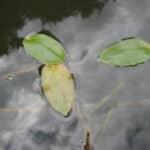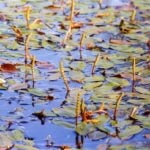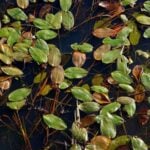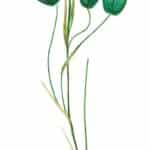Floating Leaf Pondweed
Other Common Names: broad leaf pondweed
(Potamogeton natans)
Native
Floating leaf pondweed has long, narrow, stiff submersed leaves and two to four inch long floating leaves on long stalks.
Management Options
Click here for more information on how to control floating leaf pondweed.
Description
Submersed leaves of floating leaf pondweed are stiff, alternating, can grow to nearly 20 inches long and less than one-tenth of an inch wide. Dark green or copper colored floating leaves alternate on the stem, are heart shaped at the base, two to four inches long, and up to two and a half inches wide. The leaf stalks are longer than the blade. Floating leaf pondweed flower spikes are less than two inches long; the flowers are small with four petals. Stems of this plant are cylindrical, less than one-hundredth of an inch in diameter, up to six feet long, and do not branch. The rhizomes are spotted red with fibrous roots. The point where the floating leaves are attached to the stalks on this plant are distinct: it looks like someone pinched the spot and bent it, which makes the leaves lie flat on the top of the water.
Two other pondweeds have heart shaped floating leaves: Oakes’ pondweed is smaller, and spotted pondweed has black spots on the stems and leaf stalks. Ducks and geese eat the fruit of floating leaf pondweed, and animals such as muskrats, beavers, deer, and moose eat other portions of the plant. Fish use the plant for shade and foraging opportunities.
Location
Floating leaf pondweed can be found across the western, midwestern, and eastern states of the United States.
Propagation
roots, seeds
Management Options
Click here for more information on how to control floating leaf pondweed.


